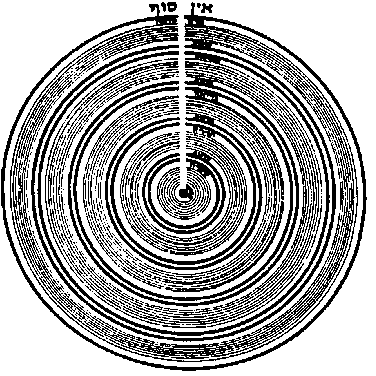Why Tarot?
Why is it magical people are so interested in the Tarot? There are numerous forms of divination. Currently, I’m beginning to study palmistry. Here are a few great resources if you’re interested:
You Can Read Palms by Richard Webster
Instant Palm Reader by Linda Domin
Palmistry Quick & Easy by Peter Hazel
Palm Reading for Beginners by Richard Webster
and
The Hand from A to Z by Judith Hipskind
There is a good reason for palmistry’s popularity: you don’t need any props. You don’t need cards or runes, tea leaves or crystal balls. All you need is your hands.
But it’s not the Tarot.
For magicians, the Tarot has far more uses than divination. The great occultist, Eliphas Levi, wrote,
An imprisoned person, with no other book than the Tarot, if he knew how to use it, could in a few years acquire universal knowledge, and would be able to speak on all subjects with unequalled learning and inexhaustible eloquence.
So even if you decide never to give a Tarot reading, learning to work with the Tarot is of inestimable value. That’s one of the reasons I include information and techniques for people to begin work with the Tarot early in my book, Modern Magick.
The images on the Tarot cards, especially the Major Arcana, aren’t selected at random. Over hundreds of years they’ve evolved to become archetypal and a part of our psyches. We are each unique people, and different artistic approaches and styles may or may not appeal to our deep minds. So there are many decks available. When choosing a deck, look at pictures of the cards. See which ones appeal to you the most, then go with that deck.
So why Tarot?
Tarot and the Kabalah
There are several approaches that link the Tarot to the Kabalistic Tree of Life. Since most forms of Western magick are directly or indirectly linked to the Kabalah, it is an obvious connection to use the Tarot.
Unfortunately, reality must step in. The Kabalah is thousands of years old while the Tarot is but several hundred years old. Merely because there is a similarity between two things (the number of paths on the Tree of Life and the number of Major Arcana cards, for example) does not mean that they were originally linked. There is no evidence that they started together in ancient Egypt or anywhere else.
But even if two things aren’t directly linked, they can still be used to illustrate principles and increase understanding. The Tarot Major Arcana fits beautifully on the paths of the Tree of Life and, thanks to a lovely coincidence, can be used to help explain the meanings and actions on the Tree. The Tarot may not have begun as a Kabalistic tool, but it has evolved into one. Therefore, the Tarot is good to use in magickal practice.
 Image by Morgan Leigh
Image by Morgan Leigh
Tarot and Astral Projection
The kabalah did not appear fully born like Athena from the forehead of Zeus. Although some “experts” will deny it, the Kabalah evolved over centuries. Thankfully, in my opinion, it continues to evolve. Things that stagnate tend to die out, and I am glad to say that the Kabalah remains alive, vibrant, and useful to philosophers, theologians, magicians and others.
One of the sources from which the Kabalah evolved was Middle-Eastern shamanism. A technique of shamanism that seems to have developed around the world consists of:
- Altering the consciousness
- Following a path through a cave, hole, door, etc., into another plane or world
- Communicating with entities in that world who provide information, support, power, etc.
- Returning to the physical world
- Return to everyday consciousness
These techniques are hinted at in the Jewish Bible and explained more thoroughly by the late Rabbi Aryeh Kaplan in his Meditation and the Bible and Meditation and Kabalah. The ancient version of this technique involved such things as fasting and sitting in positions that changed the blood flow to the head, then going on a “journey.” The modern version, for magicians, involves the Tarot.
The Major Arcana cards are seen as pathways to other worlds. Some Kabalists believe the other worlds are on a very real astral plane while other believe they are parts of our unconscious. But the bottom line is that you can alter your consciousness through ritual or other means, stare at the Tarot, and use a card as a doorway into another realm. This is one of the bases of modern Kabalistic Pathworking.
Doing such work also enhances visualization skills that are so important in magick.
Tarot and Meditation
Of course, Rabbi Kaplan’s books aren’t about the Tarot, they’re about meditation. The ancient Jewish and pre-Jewish mystics didn’t just take mystical journeys, they also meditated. The techniques used are similar to ones used today. Anciently, they may have focused on a Hebrew letter. In today’s worlds with far more colors and imagery reaching us daily, I contend we need more complex images as a point of focus in this form of meditation. The Tarot is perfect for this purpose, and I describe the technique in Modern Magick.
Balance
Israel Regardie has been quoted as saying that before starting a study of magick, or at least early on in the study of magick, a practitioner (or potential practitioner) should go through psychoanalysis. Well, he was a Reichian therapist, so that might be expected! However, in conversations I had with him he told me that his main purpose in stating this was to help people accept the idea that we had both a conscious and an unconscious mind, something that was not always accepted during his earlier days. Later, he continued stressing the value of analysis so that people would not develop an inflated ego as a result of their magickal work.
Today, most people accept that we have both unconscious and conscious minds, although concepts about them may differ. Getting into therapy so we don’t become ego inflated is also a valuable idea, although perhaps a good kick in the pants from a friend could be just as valuable. Besides, traditional Freudian psychoanalysis has lost popularity and most modern psychiatrists are focused on issuing drugs while most modern psychologists are focused on obtaining behavioral change using some form of “cognitive-behavioral therapy.” For these purposes many of these professionals do great work.
But just finding balance in one’s life can be another thing entirely. Developing an understanding of how the universe works and your place in it is a valuable part of spiritual growth, one that most psychiatrists and psychologists avoid.
One solution may be the Tarot.
The archetypal images of the Tarot can literally send messages of balance, peace, and understanding to our unconscious minds. This will eventually “trickle up” into our conscious minds, resulting in feelings of balance and being at peace with the universe. In Modern Magick I describe a technique that simply involves looking at one Major Arcana card of the Tarot for a few minutes each day. It’s not meditation, it’s just looking. The purpose is quite literally to send the Tarot’s imagery to the unconscious and bring you balance and understanding of the nature of the universe. These instructions occur early in the lessons so that, as you progress with the study and practice of magick, you’ll be better mentally equipped to deal with the challenges and benefits of being a magician.
Summation
So the Tarot is good for understanding the Tree of Life, for developing intuition and visualization, for meditation, for shamanic journeying, for balance, and for many more things associated with the study of magick. This makes the Tarot one of the great modern tools of the magician. If you haven’t explored the Tarot in the past, I highly recommend you consider doing so in the future.
That’s why Tarot.












Those are great references, but I can tell you the best reason for Tarot: pictures are fun! And informative. Most people know the saying, “A Picture is worth a thousand words,” and Tarot cards are pictures.
Throw in symbols that are familiar in every culture from every generation, and you’ve got so much wealth of information it’s nearly unbelievable. And all in a neat little deck that will fit in your pocket. 🙂
[…] Why Tarot? (llewellyn.com) […]
Growing up, my step mother used to read Tarot for fun on the side at street fairs and whatnot. It took me years of her giving me readings to not be afraid of the “death” card – I was always sure it meant I was sure to die in a terrible way!
She always reassured me that death can be a good thing, as in the beginning of something new.
Thanks for the share, Donald!